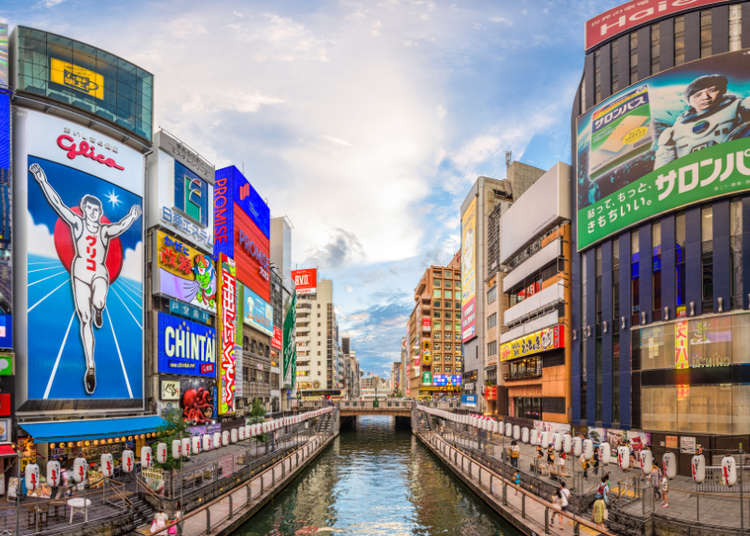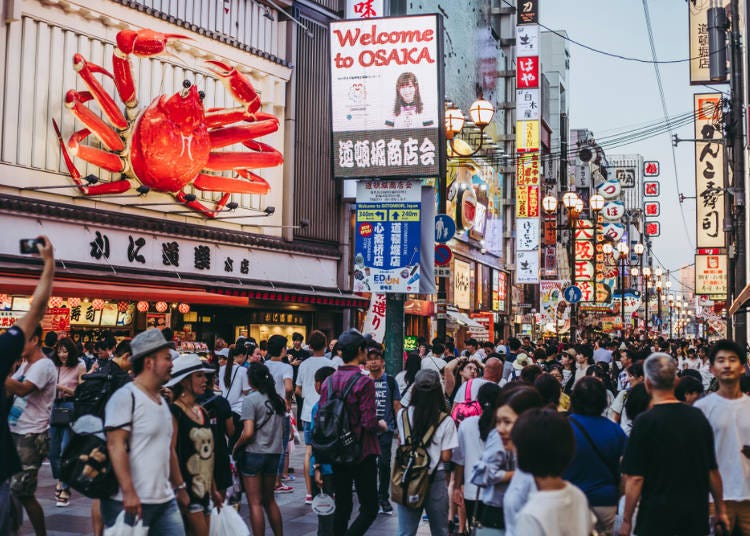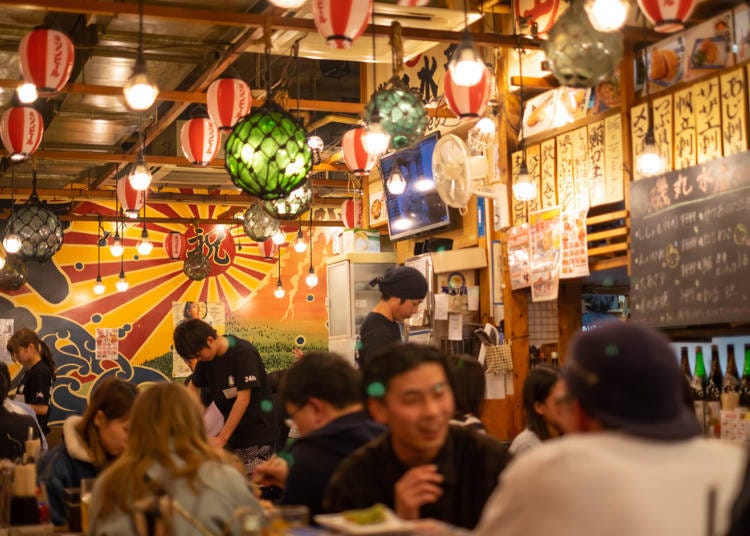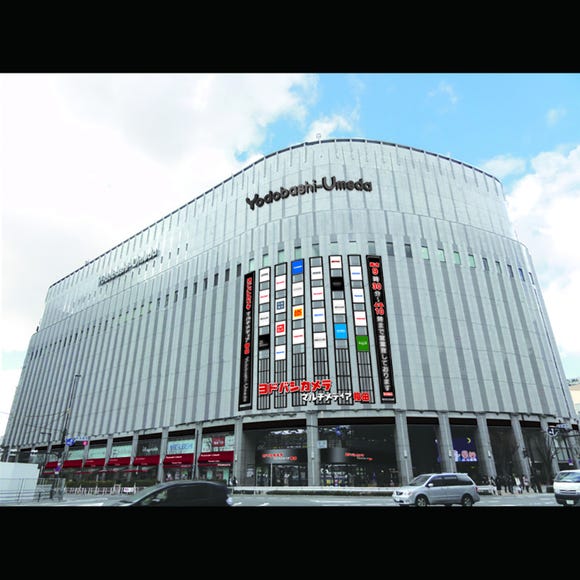
Kansai-Ben: 18 Fun Kansai Dialect Phrases To Use When Visiting Osaka
- Written by: WESTPLAN
Kansai-ben, the lively dialect of Japan’s Kansai region, is one of the most well-known and often heard, especially in comedy TV shows. This casual and intimate-sounding dialect varies slightly between Osaka, Kyoto, and Kobe, but it’s always fun to hear and use.
Here, we’ll introduce 18 Kansai-ben phrases you’re likely to encounter during your trip—whether you’re exploring the streets or dining in local restaurants.
Kansai-ben Phrases for Daily Conversation

あかん(akan)→ ɑːkɑːn
This word is used in the same way the words like "bad" or "don't" are used in standard Japanese.
Usage Examples: "Sonna koto shitara akan yan" (You can't do that), "Nande akan no?" (Why not?), "Kono mise akan wa" (This shop is no good)
ええ(ee)→ eɪ
This word is used with the same meaning as "ii", meaning "good", in standard Japanese.
Usage Examples: "Ee yo" (Okay/Sure), "Sono fuku ee yan" (Those are nice clothes), "Ano hito ee kanji ya ne" (That guy/girl seems nic)
おもろい(omoroi)→ oʊ.moʊ.ɾɔɪ
This word means the same thing as "omoshiroi", or "interesting", in standard Japanese.
Usage Examples: "Kono manga omoroi naa" (This manga is interesting), "Omoroi hito ya naa" (What an interesting/unique person)
ほんま(honma)→ hoʊn.mɑː
This word is used in the same way the words for "really" and "very" are used for emphasis in standard Japanese.
Usage Examples: "Honma honma" (Yeah/I agree/You're right), "Honma ni oishii wa" (This is really delicious)
ちゃう(chau)→ tʃaʊ
This word means the same thing as "chigau" in standard Japanese, and in conversation it is often doubled.
Example Conversations: "Kore?" "Sore chau" (This? No, not that.), "Kore de ee?" "Chau chau" (Is this okay? No way, that's all wrong.)
めっちゃ(meccha)→ metʃ. ɑː
This word is used to express emphasis of degree, size, etc.
Usage Examples: "Meccha oishii" (This is super delicious), "Meccha niau" (That looks really great on you), "Meccha ookii" (It's so huge)
せや(seya)→ seɪ.jɑː
This is used the same way "Sou da", or "Yes/That's right" is used in standard Japanese. It is often used in conjuction with the sentence ending particle "~nen".
Example Conversation: "Ashita shigoto nan?" "Seya nen" (Do you work tomorrow? Yeah, I do.)
はよ(hayo)→ hɑːjoʊ
This word is used like "hayaku" or "quickly/early" is used in standard Japanese.
Usage Examples: "Hayoshite" (Hurry up), "Hayo iko" (Come on, let's go), "Hayo kaero" (Go home early)
なんでやねん(nandeyanen)→nɑːn.deɪ. jɑːnen
This word is well-known, as it is often used as a response in comedy dialogues. It means something like "Why?", "What're you talking about?", or "That's crazy", but often used with a softer nuance. Try using it as a response when someone teases or jokes with you.
Example Conversation: "Uchi no inu, eigo hanasu nen" "Nande-yanen" (My dog can speak English. No way, that's impossible.)
かまへん(kamahen)→kɑːmɑːhen
This word comes from the standard dialect "kamawanai" (to not mind/care) which then evolved from Kansai-ben "kamawahen" to "kamahen". It is used to mean "I don't mind", "That's fine", as well as "Okay" or "Sure".
Conversation Examples: "Ikenakute gomen" "Kamahen, kamahen" (I'm sorry I can't come. It's fine, don't worry about it.) "Okuretemo daijoubu?" "Kamahen de" (Is it okay if I'm late? Sure, no problem.)
Kansai-ben Phrases You'll Hear In Shops

まいど(maido)→ maɪdoʊ
This word comes from an abbreviation of phrases like "Maido osewa ni narimasu" and "Maido arigatou gozaimasu", and by itself is used as a hello greeting in place of "Konnichiwa" or in place of "Irasshaimase" (Welcome) or "Arigatou gozaimasu" (Thank you) at restaurants and izakayas.
おおきに(ookini)→ oʊokiːniː
This word is used in place of "arigatou", or thank you, in standard dialect. The younger generations don't use it very often anymore, but you'll hear it commonly in Kyoto's hanamachi districts. At izakayas and other shops, "Maido ookini" is often used like "Itsumo arigatou gozaimasu", a general thank you and greeting to customers.
なんぼ(nanbo)→ nɑːn.boʊ
This word is used like "ikura" in standard Japanese, meaning "how many" in terms of price or amount.
Usage Examples: "Kore nanbo?" (How much does this cost?) "Kore nanbo gurai?" (About how much (in amount)?)
似おてる(nioteru)→ niːoʊ.teˈɾu
This word means what "niatteru" (it suits you) means in standard Japanese.
Usage Examples: "Yo-u niotemasu ne" (That looks really nice on you) "Yo-u nioteharimasu ne" (That looks really nice on you (formal))
おばんざい(obanzai)→ oʊ.bɑːnˈzaɪ
This word refers to typical home-cooked dishes. This word is often used in the names of items on restaurant menus for a casual, home-y feel.
炊いたん(taitan)→ taɪ.tɑːn
This word is shortened from "taita mono", and means the same thing as "nimono", or stewed/boiled dishes, in standard Japanese. In Kansai, the word "niru" (to boil/stew) is often replaced by "taku", and the word is used to refer to side dishes in Kyoto as well as the rest of the Kansai region. You may see this word in the names of dishes on izakaya menus, such as "daikon no taitan" (stewed daikon radish) or "koimo no taitan" (stewed young taro root).
酒のアテ(sakenoate)→ sɑːkeɪ. noʊ. ɑːteɪ
In the Kanto region, this is said as "Sake no tsumami" or "Sake no sakana". It refers to snacks or small dishes eaten to pair well with alcohol when you drink.
突き出し(tsukidashi)→ tsuːkiːdaːʃiː
In the Kanto area, the word used is "O-tooshi", and it refers to a dish served to you initially regardess of whether you order it or not.
Kansai-ben has a lot more words and phrases that differ from standard dialect Japanese, and the different sentence ending particles are also a large part of the dialect's distinctiveness.
Examples: Sou ya nen (From "Sou da yo ne", "Yeah/I know"), Akan nen (From "Dame nanda", "It's no use/You can't do that"), Chau nen (From "Chigau-nda yo", "No, that's wrong"), etc., where ending particles "nen" and "yanen" take the place of "~da yo" and "~nan da yo".
Examples: Sou yan (From "Sou desho", "Right?"), Akan yan ("Dame da yo ne", "You can't do that"), Chau yan ("Chigau yo ne", "That's not right, is it") etc., where ending particle "yan" takes the place of "~desho" and "~da yo ne".
The sentence ending "~haru (~shiharu)" is used to make polite/respectful expressions, and its usage differs slightly in Osaka and Kyoto. In Osaka, you'd say "Ikiharu" ("Ikareru" "to go") and "Kakiharu" ("O-kaki ni naru", "to write"), whereas in Kyoto, you would say "Ikaharu" ("Ikareru" "to go") and "Kakaharu" ("O-kaki ni naru", "to write").
The custom of adding "chan" or "san" onto the ends of foods and other words, such as "ame-chan" (candy) or "okaisan" (okayu/rice porridge), is another interesting feature of Kansai dialect.
*Prices and options mentioned are subject to change.
*Unless stated otherwise, all prices include tax.
Recommended places for you
-

Osaka Aquarium KAIYUKAN
Zoos, Aquariums & Botanical Gardens
USJ, Nanko Port
-

Jukuseiniku-to Namamottsuarera Nikubaru Italian Nikutaria Sannomiya
Izakaya
Kobe, Sannomiya, Kitano
-

Yodobashi Camera Multimedia Umeda Store
Shopping Malls
Umeda, Osaka Station, Kitashinchi
-
Goods

Yoshida Gennojo-Roho Kyoto Buddhist Altars
Gift Shops
Nijo Castle, Kyoto Imperial Palace
-

Kamesushi Sohonten
Sushi
Umeda, Osaka Station, Kitashinchi
-
Menu

ISHIDAYA Hanare
Yakiniku
Kobe, Sannomiya, Kitano
-

A Bespoke Kyoto Experience - In the Private Luxury of Hachikan Ohara
by: Cassandra Lord
-

OMO Kansai Airport Review: Great Stay for Food, Fun, and Relaxation
by: WESTPLAN
-

Enjoy a Deeper Connection to Japan With Fascinating Cultural Experiences in Kyoto and Osaka
by: James Davies
-

Journey Through Sumo's Birthplace: Uncover Historic Gems and Cultural Treasures in Katsuragi (Nara)
-

Nintendo Museum Finally Opens! Explore Nearby Uji, Top Tourist Spots, and Travel Tips
-

Why 'OMO' Hotels by Hoshino Resorts Are The Ultimate Urban Getaway in Japan
by: WESTPLAN
Inspiration for Accommodations
-

Charming Hotels to Enjoy the Spectacular Views of Arashiyama's Autumn Leaves from Your Room
-

Spacious Family Hotel in Namba: 20 Comfortable Stays for Family Fun
-

Experience Stunning Views of Osaka Castle from Private Spaces: Top Hotels Near Osaka Castle
-

Recommended by Visitors! Arashiyama's Best-Rated Hotels
-

Family-Friendly Universal Studios Japan Hotel with Excellent Access
-

Enjoy Night Views from Your Room! Recommended Hotels in Namba Area
-

Enjoy a Comfortable Stay in Osaka! 10 Hotels with Convenient Airport Shuttle Services
-

Top 10 Recommended Hotels Near Namba Station with Great Access
-

Complete Guide to Buying Japanese Medicine in Japan: Phrases and Vocabulary You Need to Know
-

Secrets to Shopping in Japan: Guide to Annual Sales in Japan & Where to Shop
by: Miyu Shimada
-

8 Unfamiliar (But Totally Normal) Customs in Japan!
-

JR Edition: Visit all of Tokyo in one Day with the Tokyo Metropolitan District Pass!
-

10 Important Japanese Phrases to Know Before You Enter a Japanese Convenience Store!
by: Teni Wada
-

Osaka Travel Service Center: So Many Incredibly Convenient Services - in English!
- #best gourmet Osaka
- #things to do Osaka
- #what to do in kyoto
- #what to bring to japan
- #best gourmet Kyoto
- #new years in Osaka
- #what to buy in nanba
- #Visiting Osaka
- #onsen tattoo friendly arima
- #daiso
- #Visiting Kyoto
- #best japanese soft drinks
- #japanese fashion culture
- #japanese convenience store snacks
- #japanese nail trends



















